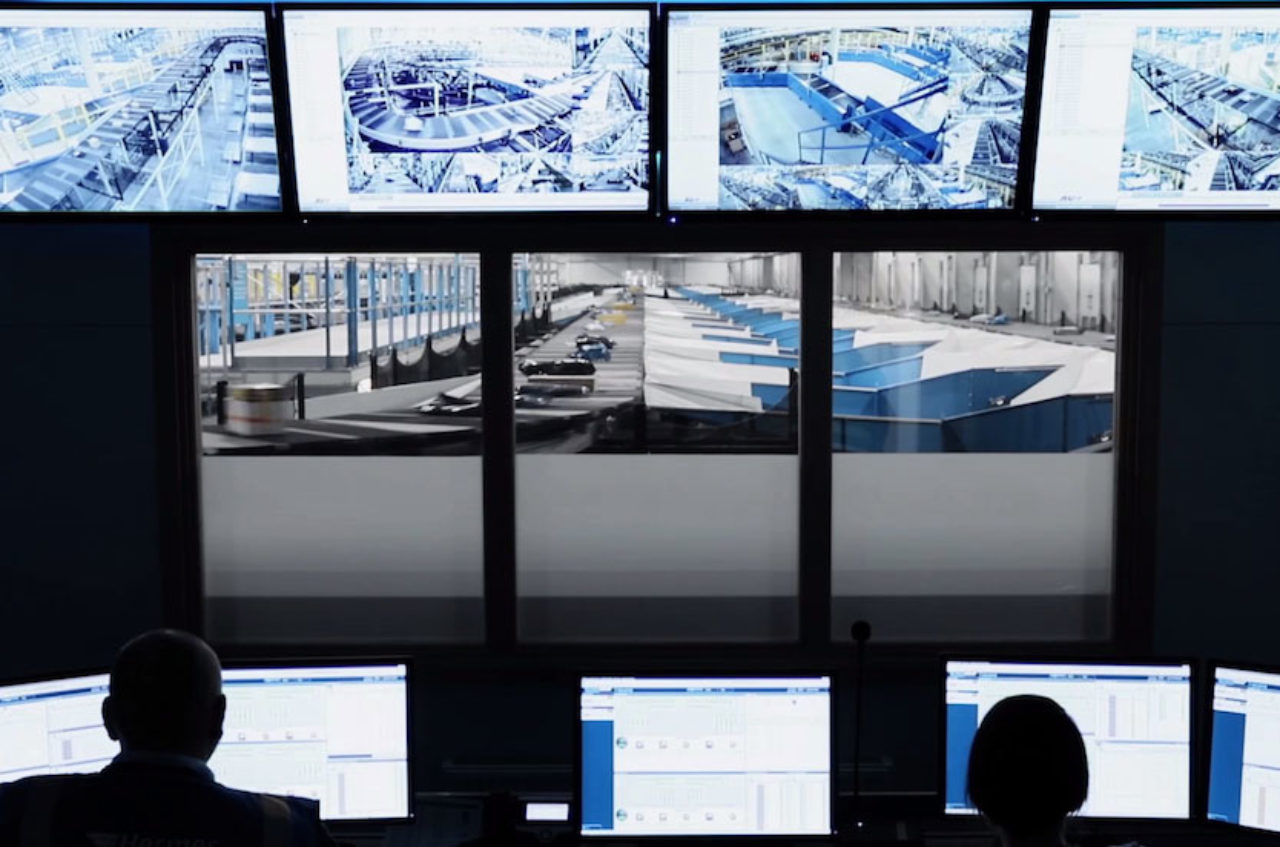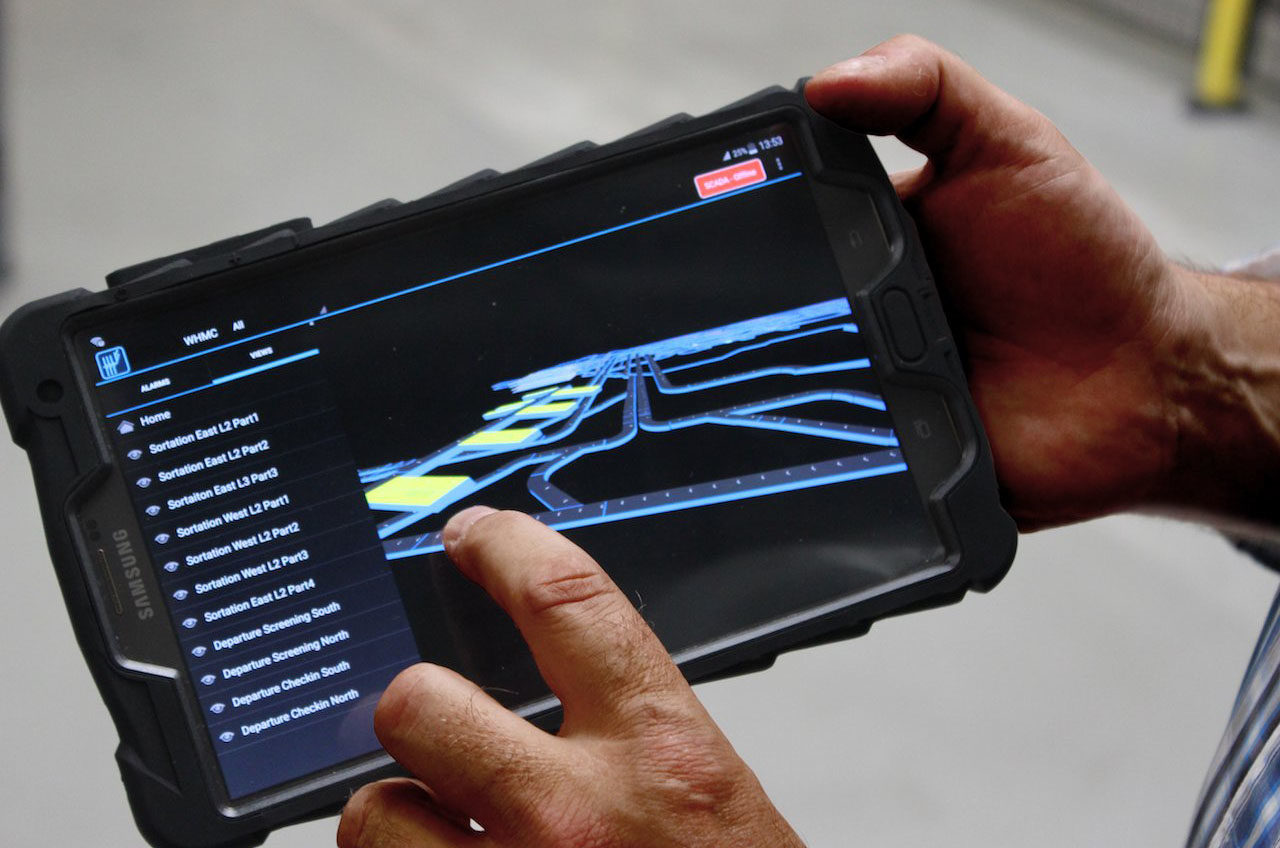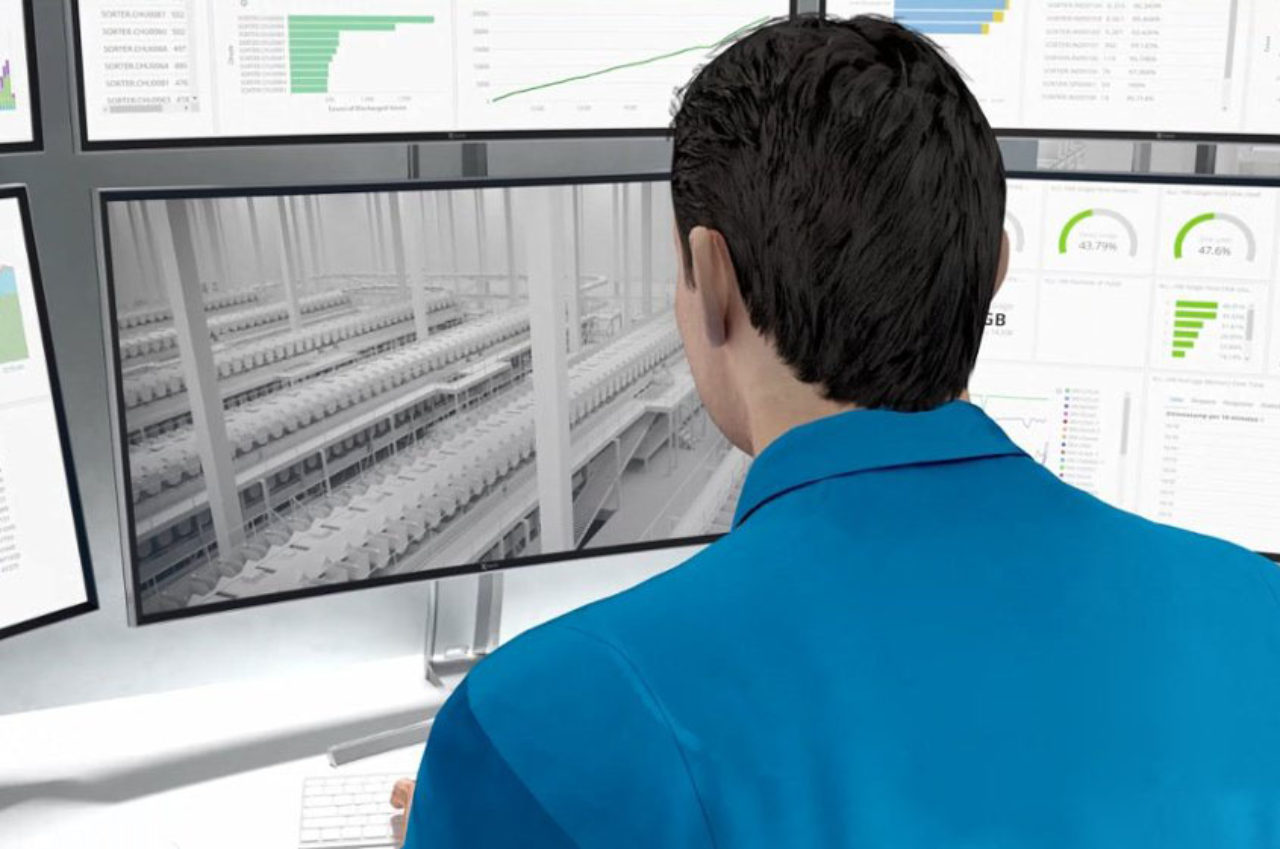A digital twin: Your new best friend for optimising parcel sortation
Imagine being able to foresee any operational problem and to optimise your operations to always use available capacity. This is the promise of a digital twin.

By Anders Lildballe & Lars Guldager
About five years ago, the first whispers of this imaginative concept started. Back then, it was something that just a few industry specialists were experimenting with, but nothing overly concrete. Slowly but steadily the whispers have turned into talking. And now we might be on the verge of an actual industry breakthrough. In this Q&A article, we ask and answer every important question about your new favorite coworker – the digital twin.
Let’s start from the top: Other than a concept that sounds like it was lifted from science fiction, what is a digital twin? A digital twin is a digital representation of something that exists in the physical world – a sortation system for example. It can be difficult to gain a full overview of such a system because of the size and level of complexity. By observing a digital twin, you will gain an overview and a good understanding of how the actual system and its processes look and function in the physical world. For a digital twin to be a valuable asset it must be a detailed and accurate representation of the actual system installed. A digital mirror image basically.

A digital twin is a combination of two components: data and a representation of the given system. The representation can be two- or three-dimensional, depending on the solution provider. BEUMER Group, for example, only uses 3D models when creating a digital twin representation of systems. The data adds a visual layer on top of the representation to make information relatable for the staff operating the system. The representation is an instrument to convey data. The digital twin creates a live representation of the system with layers such as temperature, vibrations, power consumption, mechanical and electrical status, and system throughput. These layers are lifted from the data. It may sound similar to SCADA, but the digital twin offers a much more advanced level of information and perspective. SCADA is an image of the current status, whereas the digital twin depicts past, present and future. An extremely valuable feature is that you can observe the digital twin using filters. You can observe the entirety of your sortation system while only focusing on capacity, temperature, power consumption, etc. This is a faster and significantly more efficient way to gather information than observing the physical system.
There are several methods to collect data from a sortation system in a parcel distribution centre. First you collect data from the PLCs inside the sortation system. The PLCs are essentially control systems built into the various machines detecting operational and equipment events. In addition, it might be useful to collect data from sensors. This is generally a more expensive method, but it might be the way to succeed if the necessary data points aren’t available through the PLCs. Modern sortation systems are typically equipped with a high-level controller where data can be collected from. If available, this is definitely the easiest and most efficient way to collect data.
Typically the way it works is that a systems provider will assist the distributing centre in establishing an infrastructure that collects data from the sortation system. This includes drawing data from PLCs or sensors. The collected data is live streamed from the distribution centre to the systems provider. The provider processes the data and runs it through highly advanced visualisation software. A local twin is also possible, however, this requires a local infrastructure for processing and visualising data. In either way, the result is a digital twin – a version of the sortation system recreated in 2D or 3D.
Distribution centres should only partner with solution providers that are diligent in their efforts to process data in a secure manner. It is important to remember though that systems providers are completely reliant on their ability to provide cyber security for their clients. Distribution centres are not alone in their ambition to process data securely. Also, some systems providers offer a filter that leaves out personally identifiable information from the data streamed to them.
Get the full overview: Read the Parcel distributors’ guide to digitalisation.
Digital twins can help distribution centres in a number of different ways, e.g. to identify any operational problems on the horizon or real-time adjustments to be made. Broadly speaking, their key attribute is optimising how the available sortation capacity is utilised. It’s not uncommon to improve throughput by 20-30 percent after distribution centres implement a digital twin. Digital twins can also make a big impact both in real-time sortation scenarios and in strategic planning with future production in mind. As a result, distribution centre professionals – whether they work with maintenance, operations or management – can expect to benefit from the usefulness of a digital twin. Read more about how different staff can benefit from digitalisation.

Short term, digital twins provide real-time insights to how well a sortation system is utilised at a given point in time. Consequently, digital twins enable distribution centres to make instant, on-the-fly adjustments to improve throughput in real time. Long term, digital twins provide an exceptional and valuable opportunity for managers to simulate production scenarios. They can try out different flow strategies and find the most productive flow strategy for any future parcel mix. Managers can then choose the right strategy, as they have already seen the strategies play out on the screen. Just imagine that: having the freedom to gain insights from simulating multiple different strategies and being able to always identify the one that provides the highest throughput. Without having to spend any actual resources or run the risk of choosing an inefficient strategy. Finally, you can also use a digital twin to visually replay past flows and study components of it in detail. As any professional occupied with management at a large distribution centre would attest to, keeping an eye on every part of the operation in real time is simply not an option. As a result, errors might continue to repeat themselves as no one was able to uncover the root cause.
“Keeping an eye on every part of the operation in real time is simply not an option.”
With a digital twin in place, all of that changes.

Incidents at a distribution centre are usually quite visible, it’s just very hard to keep an eye on every aspect of a sortation system and see what is hidden in the data noise. With a digital twin, the distribution centre gets to zoom in on every nook and cranny of the sortation system. This is incredibly helpful if you want to detect why bottlenecks occur in a system, or how to allocate operators according to the present parcel mix. And of course, it is really only with a digital twin that you get to watch a slow-motion version of how your sortation system handled a peak season, Black Friday, for example, and get to simulate flow strategies for the next time your system is facing a peak shopping holiday. It is all about getting the most throughput out of your system – both now and in the future.
Let’s break the process into four basic steps:
To adopt a digital twin represents a major step forward in terms of working with digitalisation. With a digital twin comes a host of opportunities – at every level of your distribution centre. However, to fulfil the potential of a digital twin, your organisation needs to learn how to use it. You need to be committed to the process of working with a digital twin.
You need to have a structure in place to collect data from your sortation system. Either through PLCs or sensors. A significant amount of data is needed to bring life to a digital twin. Identifying which data to collect can be done in partnership with your systems provider.
System drawings are used as the foundation for building a 2D or 3D representation of the actual system. The combination of data and the system representation becomes your digital twin – a visual layer that makes data relatable for the staff operating the system.
Deciding how multiple roles in the organisation can benefit the most from working with a digital twin. Maintenance staff may use the digital twin for investigating the actual status of the system. Operational staff may want to use it for improving actual throughput, while management may want to investigate future production scenarios. Completing these four steps successfully without the assistance of a systems provider is extremely difficult. For most distribution centres, the first actual step might be to research the market for a systems provider that can help the company achieve its goals. Do you want to know more about the potential of digitalisation for your distribution centre? Read our e-book about digitalisation for parcel distributors.